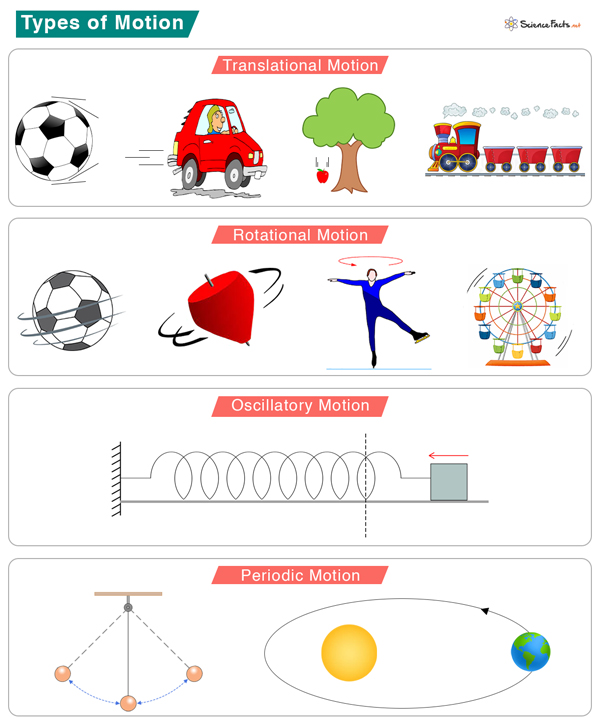What are the Types of Motion
Translational motion can be rectilinear and curvilinear. In a rectilinear motion, all points move in a straight line. For example, a train moving on its track or a bowling ball rolling down an alley. In a curvilinear motion, all points move in a curved path, For example, a racing car near a turn or a merry-go-round.
2. Rotational Motion
In a rotational motion, all points of an object move in a circle. The rotation occurs about an axis; all points move with a common angular velocity. The axis remains fixed in space. For example, a spinning top or Earth rotating about its axis.
3. Oscillatory Motion
In an oscillatory motion, the object moves back and forth about an equilibrium position. Such motion is possible only when a restoring force or torque acts on the object to bring it back to equilibrium. For example, water sprinklers or the vibrations of guitar strings.
4. Periodic Motion
In a periodic motion, the object’s motion is repeated over periodic time intervals. The time interval over which the motion recurs is called the time period. For example, a tuning fork or a simple pendulum. Other types of motion include: Uniform motion – When an object covers equal distances in equal intervals of time. For example, a car moves at a constant speed on the highway. Non-uniform motion – When an object does not cover equal distances in equal time intervals. For example, a ball falls freely from the sky.
